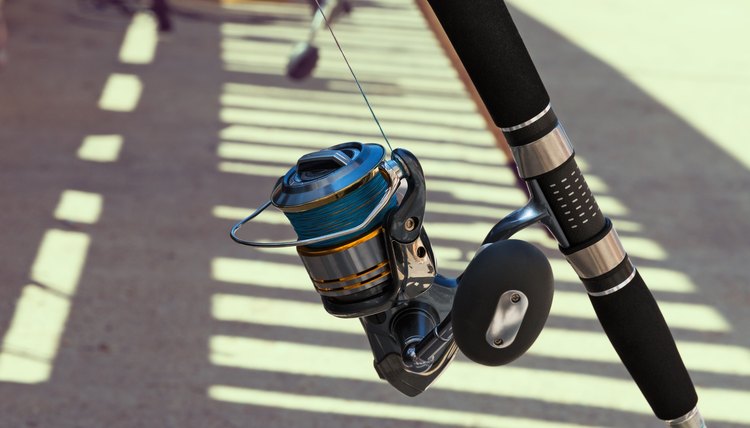Proper Use of Swivels for Fishing

A fishing swivel is a small piece of fishing equipment frequently found in tackle boxes and is used, primarily, to connect terminal tackle the main fishing line. Available in a range of sizes, colors and designs, swivels help keep fishing line from twisting and allow multiple pieces of tackle be easily attached. While a useful device, swivels may introduce weakness into fishing line.
Description
A fishing swivel is made of two separate round, metal eyelets that are connected together by a barrel fitting. The eyelets turn freely within the fitting, independent of each other. Some swivels also have snaps attached that look very much like a safety pin. The snap can be opened to allow leaders, weights and other tackle to be attached to the swivel. More expensive swivels have ball bearings in the barrel connector to provide smoother and more consistent rotation.
Function
Fishermen use swivels to provide a point between the main fishing line and the terminal tackle that will prevent any spinning movement of the tackle from twisting the main line. Swivels are also used to attach multiple pieces of tackle to a main line, such as connecting both a leader and hook and another separate line with a sinker.
Proper Use
Use only as many swivels as are absolutely required. Fewer swivels means fewer weak points introduced into your fishing line. Most rigs require only one swivel to act as the connecting point between the rig in the main fishing line. Use a swivel that is properly sized for the fishing line you are using and the type of fish you plan to catch. Harder fighting fish or larger species obviously require a more substantial swivel. Use the best possible swivel you can afford.
Benefits
Increased line twist in the main fishing line can make it difficult to cast or retrieve and can even stress the line to the breaking point. Swivels provide an axis point that allows leaders or rigs to spin, yet keeps the main line still. This reduces the amount of twist. Swivels with snaps also make it easier to change out lures, leaders and other fishing rigs. Both snap swivels and three-way swivels allow two separate lines to be connected to a mainline.
Disadvantages
Swivels, especially those with snaps, introduce weak points that can bend, break and fail, particularly under the strain of a fighting fish. Also, adding a requires two extra tie points. These knots introduce still more weakness in the line. Finally, swivels do not completely eliminate line twist. Eventually, the angler must play out the line without any tackle and untwist it, regardless of whether or not a swivel was used.
References
Writer Bio
In Jacksonville, Fla., Frank Whittemore is a content strategist with over a decade of experience as a hospital corpsman in the U.S. Navy and a licensed paramedic. He has over 15 years experience writing for several Fortune 500 companies. Whittemore writes on topics in medicine, nature, science, technology, the arts, cuisine, travel and sports.
